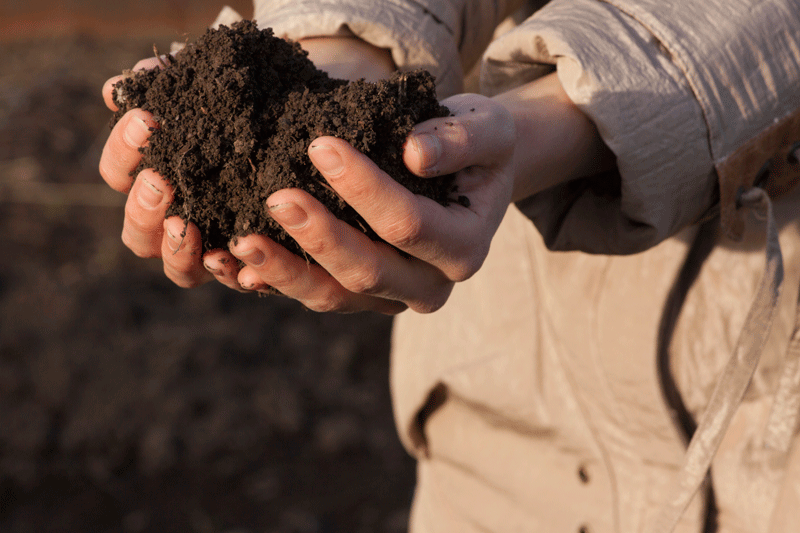The International Year of Soils
PROMOTING SUSTAINABLE PRACTICES
THE UNITED NATION’S declaration of 2015 as the International Year of Soils is prompting efforts in many nations to increase public understanding of the importance of soils to food security, inform decision makers, and support policies that protect soil resources.

Of special interest to farmers, it also aims to promote investment in sustainable soil management activities and advocates for enhanced soil information collection and monitoring.
CANADA
Tillage erosion and urban sprawl onto farmland are the most concerning causes of soil degradation and loss in Canada, according to Alan Kruzel, vice chair of the Soil Conservation Council of Canada (SCCC).
Those losses are estimated to reduce Canadian crop production by five to 10 per cent, says David Lobb of the University of Manitoba Department of Soil Science. “This represents a loss of about $2 billion per year to Canadian agriculture. For a typical farm, this translates into an annual loss of about $35,000.”
For the Year of Soils, SCCC tapped into the power of social media and used Twitter to expand soils education efforts during National Soil Conservation Week, and SCCC member organizations across the country added their own programs at the provincial and local levels.
For example, the Ontario Soil and Crop Improvement Association (OSCIA) has launched a soil and crop sustainability fund to support applied research into crop and soil management. Also in April, the Farmland Health Check-Up, which assesses soil health and possible improvements, became available to farmers in the Lake Erie, Lake St. Clair, and southeast shores of Lake Huron watersheds. OSCIA and the Ontario Ministry of Agriculture, Food and Rural Affairs (OMAFRA) are partnering with Certified Crop Advisors to offer the program, focused entirely on soil and pollinator health, at no cost to farmers. In addition to identifying Best Management Practices (BMPs) that strengthen soil health, it will provide merit-based cost-share funding to implement BMPs.
On the educational front, SCCC is working to get a provincial soil designated as a basis for expanding discussions about soil loss. SCCC will round out the year with a soil summit in December for farmers and researchers just prior to the GrowCanada conference.
UNITED?STATES
In the U.S., the agriculture department’s Natural Resources Conservation Service (NRCS) has mounted a major soils initiative that includes soil surveys by state, soil education, soil research and a soil biology primer. NRCS’s Web Soil Survey offers online soil maps and data that can be used for general farm, local, and wider area planning. State-level NRCS websites offer additional information.
A separate U.S. initiative is the “Soil Health Partnership” organized by the National Corn Growers Association (NCGA). The partnership, a multi-year project begun in 2014, is recruiting demonstration farms as showcases for growers to investigate innovative soil management practices. As of this spring, a network of 40 demonstration farms, located primarily in Iowa, Illinois, and Indiana, have been recruited, according to Dr. Nick Goeser, NCGA manager of soil health and sustainability.
Major funding for the initiative is coming from Monsanto, the Walton Family Foundation, an NRCS conservation innovation grant, and The Nature Conservancy is supplying technical support.
“With the innovation grant and the Walton Foundation funding, we have now been able to hire field staff to reach out and work directly with farmers,” Goeser reports. “We’re working with a full range of farmers, from those who are advanced in using technologies like cover crops to those who are new to cover crops and everybody in between.”
The partnership will also establish research protocols to measure the connection between a diverse range of soil practices and soil health, publish recommendations that highlight the economics and environmental benefits of healthy soils, and support networking and technical assistance to help growers make decisions that contribute to profitability and soil sustainability.
Research is expected to include cover crops, nutrient management, and all forms of conservation tillage. Goeser expects most research results to come in years three, four, and five of the program.
He emphasizes that getting information out to farmers is as essential as the research itself, with outreach planned through field days for each of the program’s demonstration farms, for regional conferences, and national farm events.
“Our website is now being updated to include more information, and our efforts won’t be limited to the ‘I’ states,” Goeser says. “We plan to extend the program into Nebraska, Minnesota, Wisconsin, and Ohio and to hold an annual soil health summit. As this develops, there are going to be opportunities for growers in Ontario to participate as well.”
For more information on Farmland Health Check-up and other funding programs, go to http://www.ontariosoilcrop.org/.
To explore the U.S. initiatives, see www.nrcs. usda.gov/wps/portal/nrcs/ site/soils/ home/ and http://soilhealthpartnership.org/. •

















